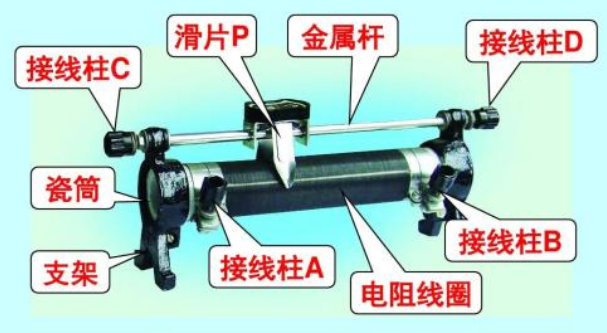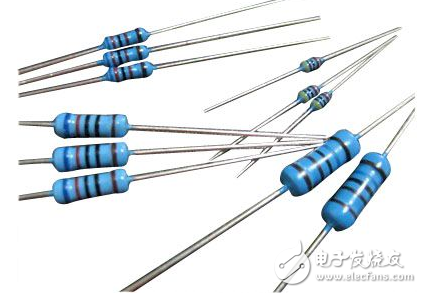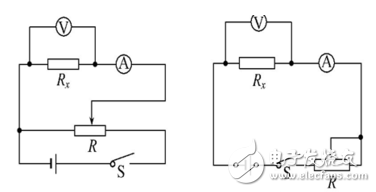1. It is the connection between the varistor and the “electric meter – the resistance to be tested†system. The partial pressure is a parallel connection in phase, and the current limiting is a series connection. The partial pressure measurement range is wider and more common; the current limit can protect the components and generally needs to be calculated.
The so-called current limit is due to the increase of the resistance, the current of the circuit is reduced under the constant voltage; due to the resistance of the sliding varistor, and the product of the current passing through it, that is, the voltage across it.
2. Partial pressure, the range of voltage change is 0-E (the two ends of the sliding varistor are connected to the positive and negative poles of the power supply, and the sliding piece is connected to a branch, which is also connected in parallel in the circuit).
Current limiting, the range of voltage variation is XE (that is, the voltage cannot be adjusted to 0, this is not connected at one end, that is, only two wires are connected and connected in series in the circuit).
3. The current limiting method of the sliding varistor is connected in series in the circuit. The voltage division method of the sliding varistor is paralleled in the circuit.
4. The voltage of the partial pressure method of the sliding varistor can be adjusted from zero, and the current limiting method cannot be adjusted from zero (ie, the partial pressure method is larger than the adjustable range of the current limiting method).

5. The current limited method consumes less power than the partial pressure method.
Partial pressure and current limiting1. The adjustment range of the voltage on the resistor to be tested is different.
Set the electromotive force of the power supply to E, and the internal resistance is not counted. In the current-limit connection, the voltage regulation range of the resistor Rx to be tested is RxE/(Rx+ Rp)-E (Rp is the maximum resistance of the sliding rheostat). In a voltage divider connection, the voltage regulation on Rx is 0-E. It can be seen that the voltage regulation range in the voltage division connection is larger than the current limiting type.
2. The adjustment range of the current on the resistor to be tested is different.
Set the electromotive force of the power supply to E, and the internal resistance is not counted. In a current-limit connection, the current regulation range flowing through the resistor Rx to be tested is E/(Rx+ Rp)-E/ Rx. In a voltage divider connection, the current regulation through Rx is 0-E/Rx. It can be seen that the current regulation range in the voltage division connection is larger than the current limiting type.
It can be seen from the above two points that the adjustment range of the current limiting circuit is related to Rp. When the power supply voltage E and the resistance Rx of the resistance to be tested are constant, the larger the Rp is, the larger the adjustment range of the voltage and current on the electric appliance is. When Rp is much smaller than Rx, the adjustment range of the voltage and current on the electric appliance is Very small. The voltage and current regulation range of the voltage divider connection is independent of the sliding rheostat Rp.
3. The power consumed by the circuit is different. In the voltage divider connection, the main current of the main circuit is large, and the power consumption of the power supply is large. In the current limiting connection, the main current of the main circuit is small, and the power consumption of the power supply is small.
Partial pressure and current limitingThe two connection methods of the sliding varistor can control the current and voltage of the mediation load, but the mediation effect is different under the same conditions. In practical applications, the current limiting method and the voltage dividing method should be properly selected according to the specific conditions.
1. Under normal circumstances (satisfying safety conditions) Because the current-limiting circuit can save energy and the circuit structure is simple, the current-limiting connection should be preferred (to improve circuit efficiency).
2. In order to facilitate the mediation, the resistance Rx of the resistor to be tested is smaller than the total resistance of the varistor or the phase is similar, and the voltage and current changes are not required to start from zero. The current limiting method can be used.
3. In order to facilitate the mediation, the voltage division type should be selected when the resistance Rx of the resistance to be tested is much larger than the total resistance of the varistor.

1) When the total resistance of the sliding varistor is smaller than the resistance to be measured, and the range of voltage or current required to be measured is large.
2) It is explicitly required that the voltage of the measuring circuit changes from zero.
3) If the current limiting method is used, the minimum current in the circuit still exceeds the rated current of the consumer.
4) When using the current limiting method, when the maximum resistance of the sliding varistor is connected to the circuit, the current of the circuit is still greater than the current required by the meter or greater than the value required by the problem.
5) When the current limiting method is used, when the maximum resistance value of the sliding varistor is connected to the circuit, the voltage of the measured resistance is still greater than the required voltage value.
6) The maximum resistance of the sliding varistor is much smaller than the estimated value of the measured resistance.
Current limiting connection is available in the following cases(1) There is no requirement for continuous adjustment of current or voltage in the circuit from zero when measuring, but only in a small range, and RL and R0 are not much different or RL is slightly smaller than R0, and current limiting connection is adopted.
(2) When the discharge current of the power supply or the rated current of the sliding varistor is too small to meet the requirements of the partial pressure connection method, the current limiting connection method is adopted.
(3) There is no high requirement. When both can be used from the perspective of safety and accuracy, it can be considered that the installation is simple and the energy-saving factor is preferred.
In summary, it can be abbreviated as: zero must be divided (pressure), slip small must be divided (pressure); slip can be limited (flow), but the burning table must be divided.
Voltage dividing circuit and current limiting circuit

Piezoelectric Ceramic Atomizer,Microporous Piezo Atomizer, Piezo Atomizer
NINGBO SANCO ELECTRONICS CO., LTD. , https://www.sancobuzzer.com